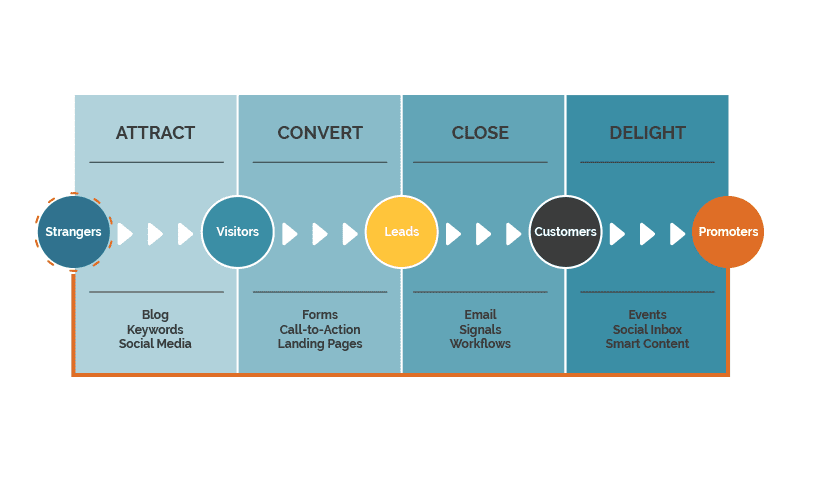Most people in the sales and marketing profession are familiar with the traditional idea of the sales funnel; a visual representative of the path that a buyer takes from prospect to customer.
But in the inbound era, things are a bit different. While an inbound sales funnel is similar to a traditional sales funnel, there are still a few key differences to be aware of if you want to master your understanding and control of your inbound sales process.
Here is a breakdown of the stages in the funnel, from the largest to the smallest (top to bottom):
Strangers in your target audience
These are people who either have never heard of your company, or maybe know the name but don’t know who you are or what you do. The only thing that separates this group from the general population of the internet is that they are a part of your target audience – they have demographic characteristics that naturally make them a fit for your offering, whether those characteristics relate to their job title, age, or other specified characteristics. For example, if you are selling accounting software to businesses, any VP of finance or head of accounting could fall within this top portion of your funnel.
Marketing qualified lead (MQL)
A marketing qualified lead is exactly what it sounds like; a lead that has qualified themselves through your marketing. An MQL has shown their interest in your offering by interacting with one or more pieces of your marketing content. Often, an MQL is someone who has “converted” an offer on your website, which means they have provided you with their information in exchange for something of value – a coupon, helpful eBook, or a subscription to your email newsletter.
Qualification
A prospect who falls within your target audience and has expressed an interest in your offering has a fair chance of becoming a customer, but they aren’t a sure bet to buy. The qualification step is when sales reps make sure a prospect has what it takes to become a customer.
One of the biggest components of qualification is the price. It doesn’t matter how interested a prospect is – if they can’t afford what you have to sell, they can’t become a customer. Another common qualifier is authority – does this person have the power to make buying decisions for their organization? The Salesforce blog does a great job at outlining the ideal characteristics for a well-qualified lead.
Opportunity
Once it’s been determined that a lead is facing the problems you solve and has the budget and authority to make a decision, the real selling begins. While prospects who reach this stage have a higher probability of buying, they also are probably looking at a few other options – especially if what you sell is a complex, high-priced B2B solution.
This is the stage of the deal where you must prove that your offering will do a better job of solving their problems than going to a competitor or trying to fix the problem in-house. Case studies and customized sales presentations are ideal assets to use during this part of the sales funnel.
Proposal/negotiation
If you’ve done everything right – qualified the lead for budget and need, shown them how your solution can help, and given them information about typical results – this step should be a formality. Prospects should already know how much your offering costs and how it is implemented. In this final step, you will simply firm up the terms of your contract, payment methods and due dates, etc. If you are presenting new or critical information at this stage in the funnel, you are doing something wrong.
Keep in mind that this is a generic model of a common sales funnel – yours might have one or two extra or fewer stages. The specifics of your inbound sales funnel aren’t as important as its overall function: helping you understand and improve your company’s sales process and gaining more control over the way you bring in business.


